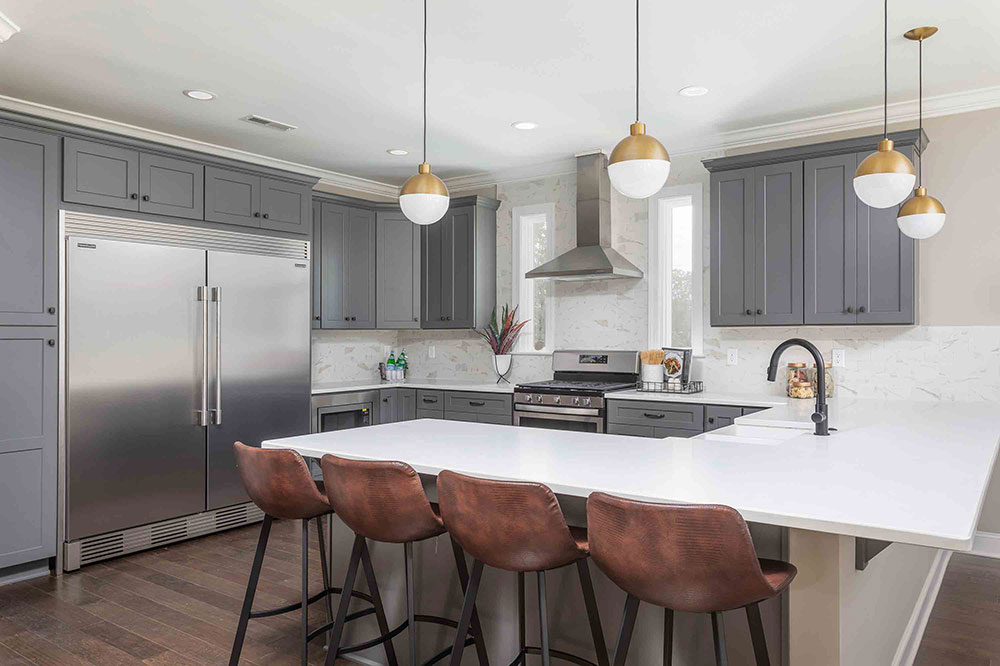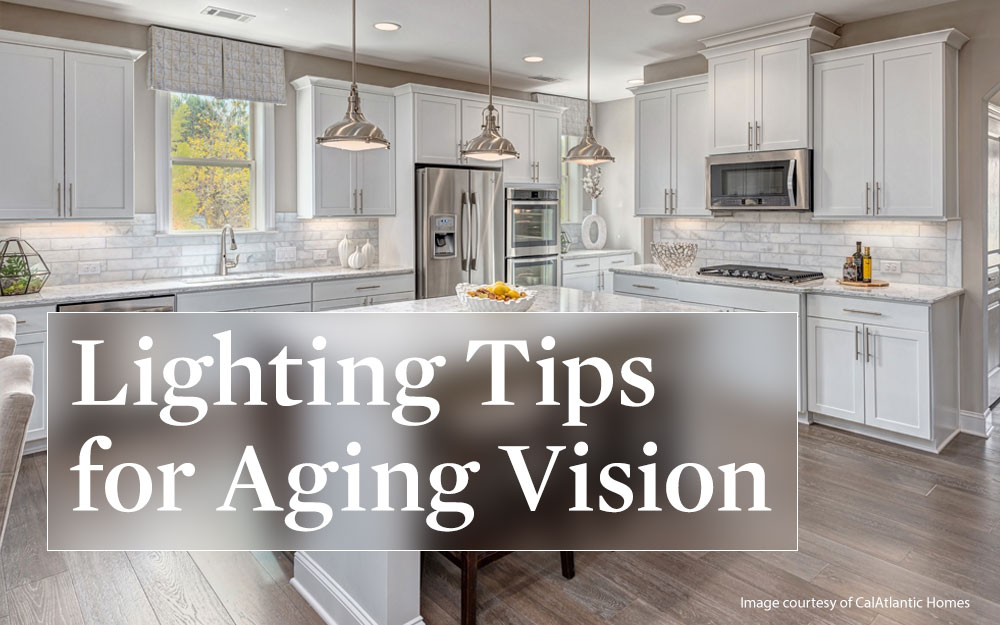As we age, so do our eyes. Physical changes take place that makes seeing everyday objects and performing everyday tasks more difficult. The eye's lenses begin to discolor, making it harder to see and distinguish between certain color shades. The muscles that control pupil size and reaction to light lose some strength, so glare becomes an issue. Other changes cause light entering the eye to be scattered rather than focused precisely on the retina, affecting vision quality.
Proper lighting can help alleviate some of these issues. Here are some ways to make the right lighting choices to ensure a safe, healthy and independent way of living as we age.

Image courtesy of GreenTech Homes & Piper Stromatt. | P500147-109-30
Choose LED Lights
One of the best ways to begin is to select LED light sources whenever possible. Choose fixtures that have LED lights integrated inside them or replace existing light bulbs with LED bulbs. LEDs offer a range of color temperatures, from cool to warm. As our eyes age, it is easier to perceive cooler colors than warmer ones. LED lights are available in specific color temperatures, such as 2700K - 3000K, a warmer range and 4000K and higher, which are cooler. And new LED technology is now available that offers color-changing abilities within the bulb itself, so color temperatures can be precisely controlled to a color that works best for the individual and the space.

Image courtesy of Stephen Alexander Homes. | P500047-104, P700005-028-30 and P700003-028-30
More Tips for Aging Vision
The Illuminating Engineering Society offers additional lighting guidelines for the aging eye, including:
- Use brighter light: as the eye ages, it cannot absorb as much light, and brighter lights compensate for some of this. Seniors need about 75% more light than the average 25-year-old.
- Light fixtures need to have adequate shades, diffusers or concealed light sources to prevent glare or too-bright light.
- Use uniform ambient lighting so that the general level of light is consistent between rooms and provided without direct or reflected glare.
- Whenever possible, daylight should be used to supplement electric light.
- Indirect ambient lighting is preferred to prevent glare and can be implemented using recessed downlights, valances, wall washers, torchieres, and similar equipment.
- Install lighting that accentuates the color of walls and surroundings; lighter and brighter finishes on walls and ceilings can brighten the space by reflecting more light.
- Place task, accent, and recessed lighting with adjustable illumination levels to provide supplemental lighting in specific reading or work areas.
- Install additional supplementary illumination, such as step lighting mounted under stairs and undercabinet lighting, to provide additional light for safety and extra illumination without adding glare.
- Add motion sensors that automatically turn on the light so that you do not have to search for a light switch when entering a room or when getting up at night.
Shop our wide selection of lighting and accessories here.

